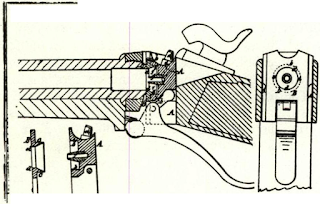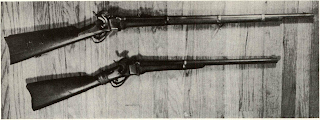The basic principle of toggle-linking trigger guardlever and vertically sliding breechblock dated from that
patent. Sharps’ sliding wedge breechblock is still with
No finer piece of precision manufacturing in steel
The “Model ” was the basis for the Civil War
Winston O. Smith’s The Sharps Rifle (Morrow &
R. S. LAWREJfCE
Dec. 20,.
To make possible the cleaning of the central section of the
The Sharps Rifle Manufacturing Company used special
It is interesting to note that the tumblers, bridles, mainsprings, and mainspring swivels of these later models (
In , almost a century after it was made, I
 |
Sharps New Model carbine illustrated in Official |
No finer piece of precision manufacturing in steel
The “Model ” was the basis for the Civil War
Winston O. Smith’s The Sharps Rifle (Morrow &
R. S. LAWREJfCE
Dec. 20,.
To make possible the cleaning of the central section of the
The Sharps Rifle Manufacturing Company used special
It is interesting to note that the tumblers, bridles, mainsprings, and mainspring swivels of these later models (
In , almost a century after it was made, I


Comments
Post a Comment